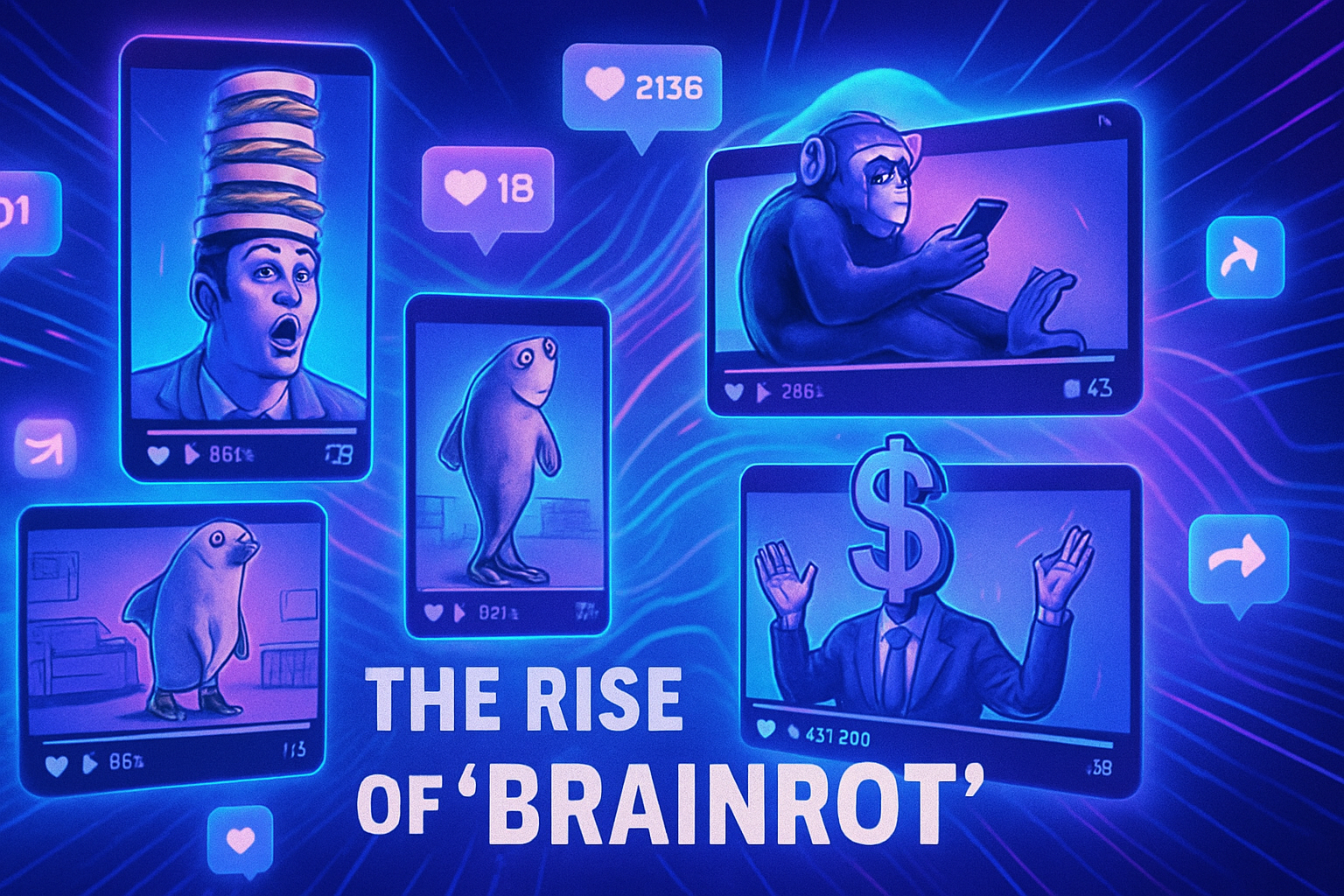The absurd imposes itself on social networks. Disconcerting videos, like a shark on a motorcycle or a chicken with Zuckerberg’s head, captivate internet users. The term “brainrot” emerges as an economic reality. This phenomenon transcends simple entertainment, transforming the bizarre into lucrative opportunities. Creators and marketers exploit this delirious creativity. Their goal? To monetize the irreverent through training programs and advertising spaces. This digital world, within which the absurd generates millions, questions our expectations regarding content and the perception of art.
The rise of the “brainrot” phenomenon
The term “brainrot” bursts onto online discussions, characterizing an inexhaustible production of absurd videos generated by artificial intelligences. These hilarious and often bewildering creations flood social networks, captivating millions of users. Rather than being designed for aesthetic appreciation, these videos are intended to surprise and fascinate the viewer with outlandish images.
A lucrative industry
This phenomenon is far from trivial. Content creators profit from this craze by marketing tools, advertising spaces, and training programs. A number of popular accounts on platforms like TikTok and Instagram showcase this source of income by offering products related to the production of absurd videos. The figures speak for themselves: some creators boast tens of millions of views, accumulating considerable sums.
Monetization strategies
Generating revenue through brainrot relies on various mechanisms. The sale of online courses constitutes a central axis. Experts like Mr. Trallaloo, specializing in “Italian brainrot” videos, sell a PDF titled “Create and Master Your Own Brainrot Universe” for 35 euros. This amount may seem minimal, but selling several guides a day transforms the economic situation of these creators.
Paid training programs
Fusion Boy, an account that creates montages with political figures transformed into animals, had included a link to a video training program priced at 70 euros. As for The POV Lab, it offers a unique immersion into eccentric universes through videos, monetized at 22 euros. These initiatives well illustrate the rise of monetized training integrated into digital culture.
The impact on digital culture
Brainrot is not limited to mere distraction. This expanding phenomenon actively shapes digital culture. It represents a new aesthetic characterized by the absurd, transforming platforms into spaces of anarchic creativity. Furthermore, the attention these videos attract has altered algorithm dynamics that favor the dissemination of strange and captivating content.
An aesthetic of the bizarre
Illustrative videos in this field include characters such as Tung Tung Sahur, an anthropomorphic stick, or animals endowed with critical thinking. This innovative approach attracts an audience eager for content that challenges usual conventions. Thus, each video becomes both an entertaining spectacle and a playful critique of social norms.
A conclusion in the making
This phenomenon is illustrated by a collective trance around the creation and consumption of improbable content. Algorithms, shaped by the constant demand for the absurd, continually propel these videos towards a broader audience. Thus, brainrot continues to strengthen, revealing a universe where the absurd generates both laughter and profits.
To delve deeper into the topic of the impact of artificial intelligences on digital content, consult the analysis on Fortnite’s lawsuits.
Questions and answers about the “brainrot” phenomenon and its economic impacts
What is the “brainrot” phenomenon?
“Brainrot” refers to a category of AI-generated content that prioritizes absurdity and bizarre elements, often to capture the attention of users on social media.
How do brainrot videos manage to generate profits?
Creators utilize several strategies, including the sale of online courses, creative tools, and monetization through advertising, to derive income from their content.
What types of content are considered brainrot?
Content includes videos that combine unexpected images, absurd fictional characters, and comical or useless situations, often generated by AI algorithms.
Why has brainrot captivated so many users on social media?
The surprising and unexpected nature of these videos creates strong engagement among users, prompting them to share and interact more with this type of content.
What is the impact of brainrot on online content creation?
This phenomenon encourages a new aesthetic of the absurd in content creation, with implications for how creators seek to capture online audiences’ attention.
Who are the main players in the brainrot market?
The market is dominated by content creators on platforms like TikTok and Instagram, which include influencers and specialists looking to monetize their videos.
What role do social platforms play in the dissemination of brainrot?
These platforms facilitate the virality of brainrot content through algorithms that promote engaging videos, resulting in increased views and interaction.
Can brainrot creators rely solely on this phenomenon for their income?
While brainrot can generate significant revenue, it is advisable for creators to diversify their income sources to ensure sustainability.
How can a new user start creating brainrot content?
A new user can start by experimenting with AI tools to generate absurd videos and drawing inspiration from popular trends on social media to engage the audience.
Are there risks associated with creating brainrot content?
Yes, creators may face criticism regarding the quality of the content, as well as challenges related to monetization and the sustainability of this type of content over time.






